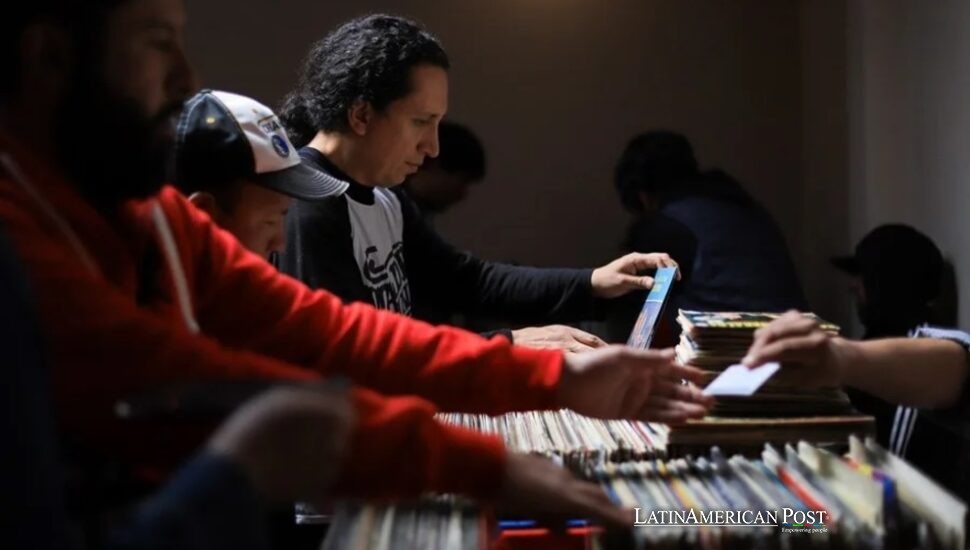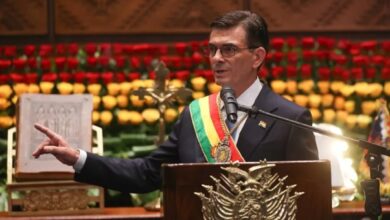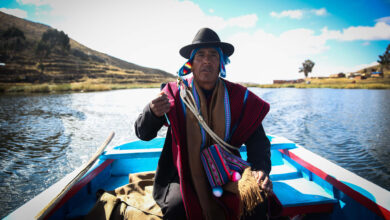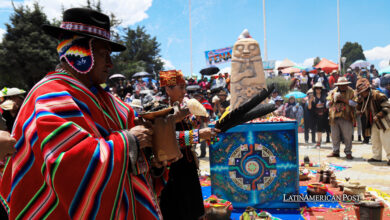Bolivia’s Vinyl Renaissance Uncovers Timeless Records and Fuels Nostalgia

In a modest venue in La Paz, a group of vinyl aficionados is bravely breathing new life into Bolivia’s once-forgotten record culture. Age-defying music from The Beatles, Wara, and others draws eager fans of all generations, offering a nostalgic journey.
A Revival That Spans Generations
Even if vinyl records look like old objects, they have a comeback in La Paz, Bolivia. About twenty passionate collectors formed a lively group. In it, these people display, sell, and exchange records from different times. Original editions of rock giants such as The Beatles, Led Zeppelin, or AC/DC sit alongside Spanish crooners like Roberto Carlos and Camilo Sesto. At the same time, beloved Bolivian talents—Wara, Climax, and guitarist Alfredo Domínguez—also grace the turntables. Despite the march of digital technology, these passionate music lovers stand firm: the crackle of a needle and the warmth of an analog sound remain unmatched.
The heart of this cultural phenomenon is the “Feria del Vinilo,” a vinyl fair held for over a decade in La Paz. During the most recent edition, dozens of devoted collectors hauled in hundreds of meticulously preserved discs, some produced as far back as the mid-20th century. Visitors wandered between rows of stands, flipping through iconic album art as music samples poured from vintage turntables. Cassette tapes joined the display, adding another touch of old-school charm.
For Carlos Gonzales —who revealed to EFE that he has amassed 3,000 records over 45 years— vinyl is more than a nostalgic hobby; it is a sensory experience. “I’ve been into collecting since I was very young,” Gonzales told EFE. “I wouldn’t trade the sound of a turntable for anything you can download online. Listening at home, with speakers, a turntable, and an equalizer, there’s nothing like that crackle of the needle.”
Across the tables, one could spot 7-inch singles priced as low as two Bolivianos (about 30 cents in U.S. currency) and rare LPs that fetch up to 3,000 Bolivianos (nearly 434 dollars). According to the fair’s organizer, David Quelca, certain gems carry near-mythic status. “Many records are used, so their condition influences the price,” Quelca told EFE. “It also depends on what people are after. One of the most sought-after, scarce, and expensive is Wara’s album El Inca (1973), a hallmark of Bolivian progressive rock.”
There are also inexpensive mainstays. For example, the Spanish singer Julio Iglesias is accessible because of the vast number of local records. Because of this interaction of pricey collectibles plus cheap choices, guests can examine the broad extent of the vinyl scene. This applies to experienced record collectors or intrigued new people alike.
Memorable Gems and Rare Finds
What captivates collectors most is the sheer variety of records uncovered across Bolivia. Original pressings from classic rock bands mingle with Spanish-language legends like Sandro and Camilo Sesto. Once dismissed as cheap knockoffs, even “pirate” bicolor versions enjoy new prestige; their rarity and unique sound can command high prices.
This diversity attracts younger people. They often visit because of curiosity, but they depart with improved respect. Fernando Hurtado is an investigator plus collector. He manages a record shop in La Paz and observes this change directly. Hurtado explained to EFE that after decades of slumber, vinyl culture in Bolivia has roared back to life, appealing to teens and young adults seeking an authentic sonic experience. “There’s something about vinyl that captures the listener differently,” Hurtado said. “It’s the whole ritual: removing the record from the sleeve, placing the needle, hearing that faint crackle before the music starts. Young people want that tangible connection to music.”
From a historical standpoint, Bolivia’s earliest recorded music dates back to 1910. At that time, the “Republican Band of Paris,” alongside Spanish tenor Diego Segado, recorded Bolivian tunes in France. Between 1910 and 1949, local artists lacked studios in their homeland, forcing them to seek facilities in Argentina, Chile, or even the United States. This meant that for nearly four decades, recordings of Bolivian music were often managed by foreign companies or produced under less-than-ideal conditions.
It wasn’t until the 1950s that Bolivia saw its first homegrown record company, Discos Méndez. Located in La Paz, it soon branched into radio programming and live artist showcases, pressing local performances onto vinyl. Iconic Bolivian performers—like Gladys Moreno, Raúl Shaw Moreno, and Los Jairas—gained national acclaim through this platform. Gilbert Favre, famously connected to Chilean folklorist Violeta Parra, even appeared.
By the 1960s, Discolandia emerged, ushering in the transition from clunky gramophone discs to more durable vinyl. Before long, local copies of international releases appeared alongside homegrown Bolivian albums. This golden age carried on until 1997 when the final vinyl pressing in Bolivia gave way to the then-dominant compact disc (CD). Older records gathered dust in attics or stalls at local markets for a while.
Bolivia’s Past and Future on Vinyl
Fast-forward to the 2010s: an unexpected global revival of vinyl records also made its mark in Bolivia. New pressings appeared, and modern record players—some with USB connectivity—hit store shelves. For devotees of classic rock, Latin ballads, or Andean folk, vinyl became a bridge linking generations. Parents, children, and grandchildren bonded over the crackle-and-pop digital audio lack.
Gonzales and Hurtado are leading this vinyl revival by organizing events for beginners to learn proper record maintenance and explore timeless music. The fair displays commerce but also sustains cultural heritage, which originated over a century ago.
For this nation whose musical legacy traveled worldwide for decades, restoring history creates profound connections. The history of Bolivia comes alive as a needle drops onto an old record. Vinyl production decreased to a minimal flow during the late 1990s, but a fresh wave of enthusiasm has helped bring it back to life among new generations.
The fair organizer, David Quelca, identifies the significant potential for expansion. He maintains that vinyl represents a physical connection between musical heritage and current trends. Vinyl continues to captivate generations through gatherings featuring Bolivian rock blended with international pop icons and legendary singer-songwriters who demonstrate that musical preferences evolve, yet the enduring allure of vinyl endures. Quelca told EFE that older collectors have maintained their love for vinyl. Young audiences are discovering vinyl records for the first time. The experience transcends music when I observe their excitement during playback because it represents so much more than sound alone.
Also Read: Argentina’s Daring Urban Star María Becerra Redefines Global Music Identity
Bolivia’s vinyl revival persists at a modest venue in La Paz, where attendees enjoy swirling guitar riffs and heartfelt boleros accompanied by the distinctive sound of a needle on wax. Each unearthed record renews the nation’s musical legacy and gathers collectors and fresh listeners alike. The effect from these cuts goes beyond mere tales of the past —it reinforces vinyl’s enduring bond with music enthusiasts who value its analog nature—.





